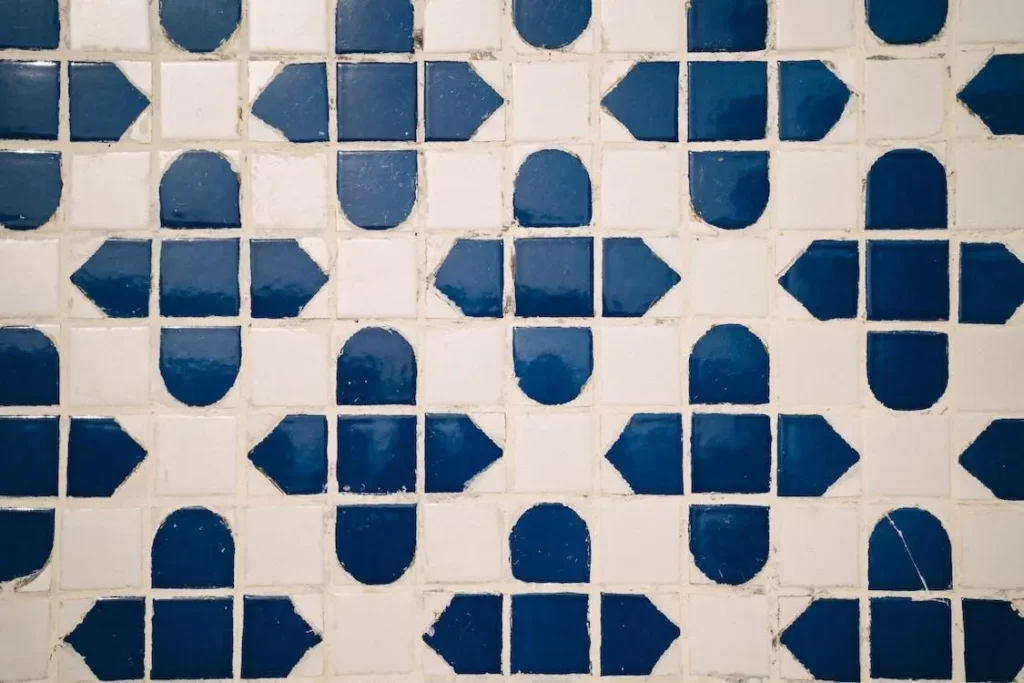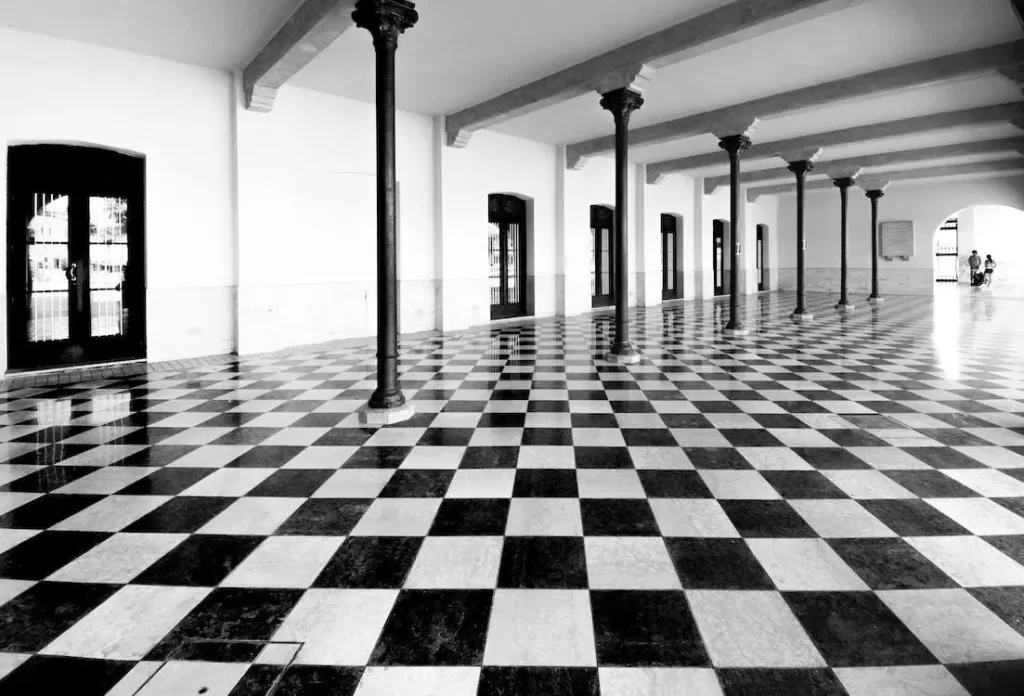Porcelain tiles Vs Ceramic Tiles
Tiles are one of the most versatile and dynamic design elements. Used for floor or walls, they are perfect for high-traffic areas like the living room or kitchen, humidity-plagued areas like the utility, bathroom, and backsplash over the sink or stove in the kitchen. But tiles are not just utilitarian they can be used for decorative purposes too.
There are different types of tiles available in the market. There is variation in material, size, texture, colours, and design.

Ceramic and porcelain are two of the most popular tiles at the moment. They are widely used in homes, offices, and even commercial establishments. Glass tiles, marble tiles, granite tiles, and stone tiles are a few of the other tiles available.
Porcelain tiles are best used for floors, walls, and places with high moisture content like bathrooms, commercial properties, and high-traffic areas. They can be used both indoors and outdoors.
Ceramic tiles can be used in home and commercial interiors-both floors and walls. Generally, it is advisable to use ceramic tiles in indoor areas and areas with low traffic.
It is important to choose a tile best recommended and rated for your need.
Knowing the properties and benefits of tiles would help you in selecting the one best suited for your purpose.
In this article, we list the properties, advantages, disadvantages, and differences between the two most popular kinds of tiles.
Difference between ceramic tiles and porcelain tiles

- Manufacturing
Both ceramic and porcelain tiles are made from clay, but the difference lies in the type of clay and manufacturing process.Ceramic tiles are made from red, brown, or white clay and are fired at a high temperature.Porcelain tiles are made from refined white clay mixed with fine sand and are fired at higher temperatures for a longer time.
Structural properties
Porcelain tiles are more durable, denser, and brittle whereas ceramic tiles are less porous, more delicate, and have high water absorption properties.
Appearance
Porcelain tiles are unglazed and have the same colour and design throughout their body, hence any accidental chips are not prominently visible.In ceramic tiles, the colour and design are printed on the surface and are glaze protected. Since the body of the tile is different from the surface, chips are noticeable.
Cost
Porcelain tiles are more expensive than ceramic tiles due to their structural differences.
Benefits of using Porcelain tiles

- High moisture resistance
Porcelain tiles absorb less water as compared to ceramic tiles. Also, they are stain-resistant, fade-resistant, and frost resistant. Thus, they are used in areas with high moisture levels, such as kitchens, bathrooms, wet rooms, utility areas, etc.
Since they are resistant to weather changes, they can be used in outdoor areas too.
Durability
They are more durable and harder than ceramic tiles. They can withstand heavy furniture and footfall, thus making them a perfect choice for living areas, kitchens, foyers, entrances, etc.
Anti-slip
Porcelain tiles are non-slip and hence are safe choices for wet areas, and homes with children or senior family members.
Maintenance
Porcelain tiles require low maintenance because of their high durability. Regular cleaning with soap and water is sufficient to maintain it.
Longer Lifespan
Porcelain tiles have the longest life span compared to all flooring tile materials. They are hard, tough to break and scratch-resistant.
Disadvantages of Porcelain Tiles

Image credit – Magda Ehlers/ Pexels
Cost
Porcelain tiles are costlier than other flooring tiles. Also, installing porcelain tiles is quite challenging and time-consuming, making it an expensive choice.
Strength
Porcelain tiles are inherently heavier. If your room doesn’t have large floor beams, laying porcelain tiles can be risky.
Benefits of using Ceramic tiles

Cost advantage
Due to the difference in manufacturing and structural properties, ceramic tiles are much cheaper than porcelain tiles.
Also, since ceramic tiles are easy to install, the installation cost is less too.
Workability
It is easier to work with ceramic tiles. They are lighter, less dense, and easier to cut and shape as compared to porcelain tiles.
Water and Stain resistance
Ceramic tiles are an excellent flooring option in damp areas like bathrooms, basements, kitchens, showers, swimming pools, etc. They are more porous, and water resistant and do not develop stains either. Any excess water can be easily mopped before it can seep under the tiles.
Variety
Ceramic tiles are diverse in terms of colours, and designs. Dyes are inserted into ceramic tiles during the manufacturing process, thus making them available in a variety of shades and patterns.
Fear of Allergens
Certain flooring materials like wood, carpet, etc trap dust, hair, or other allergens. Ceramic tiles are a boon for people who are allergic and sensitive to dust etc.
Since they are impermeable to water and moisture, they are less prone to germs and moulds. They don’t accumulate allergens over time and are easy to clean and maintain.
Disadvantages of Ceramic Tiles

Grout
Even though ceramic tiles are easy to clean, dirt and grime tend to accumulate on the grout between tiles. Scrubbing requires effort and time. Also, grout needs frequent re-sealing, else it will lose its strength and water might pore down the gaps.
Maintenance cost
Though the initial cost of purchasing and laying ceramic tiles is less, the maintenance and repair costs are more as compared to porcelain tiles.
Guidelines for selecting the correct tile

PEI rating is a standard that all manufacturers have to declare. It’s the easiest and best way of identifying and selecting tiles best suited to your requirements. PEI rating helps identify the hardness of the glaze, and that further would determine the usage depending on footfall, durability, and wear and tear.
PEI 0 – Not suitable for floors. Can be used for wall tiles.
PEI 1- Can be installed in very light traffic areas
PEI 2- Good for light traffic areas
PEI 3- Suitable for home flooring
PEI 4- Home flooring and commercial areas with moderate to heavy traffic
PEI 5- Best suited for commercial and domestic areas with very high traffic
As per industry standards, most ceramic tiles come with a PEI rating of 2 or 3. Porcelain tiles are harder and thus are ranked between 3 and 5.
We hope you found this article helpful. If you have any queries, reach out to us and we will be glad to assist you.
